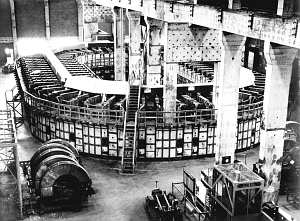
[IN RESPONSE TO A QUESTION FROM A SOLARI REPORT SUBSCRIBER]
By David Liechty
To obtain radioactive Uranium 235, Manhattan Project engineers created large devices called calutrons, which utilized large electromagnets. These electromagnets typically used copper wire to carry electric charge, but copper was in short supply at the time, and the engineers turned to silver instead, borrowing 14,700 short tons (429 million troy ounces) of silver from the U.S. Treasury’s West Point, NY Bullion Depository (see Miller, Key to Obtaining 14,700 Tons of Silver Manhattan Project and The Silver Lining of The Calutrons).
All the silver was reported returned by 1970 and is said to be held in reserve at the West Point Mint, as the West Point Bullion Depository is now known. A small fraction of the silver was “lost” (approximately 0.036%), equaling about 5.3 short tons, or approximately 154,500 troy ounces.
Some individuals speculate that the silver was not actually removed from the calutrons (see The Great Silver Mystery (…and the greatest secret of all time!)) by 1970, but remained in the calutrons until they were taken out of service in the 1990s. No evidence is given for this, and the fact that the calutrons could be operational using copper wire suggests the much more valuable silver would have been removed (see Bullion to B-fields: The Silver Program of the Manhattan Project.).
The suggestion is further made that the silver held back in “deep reserve” has been used to suppress the silver price over time (see again The Great Silver Mystery (…and the greatest secret of all time!)). There is no evidence presented to back up this allegation, either.

